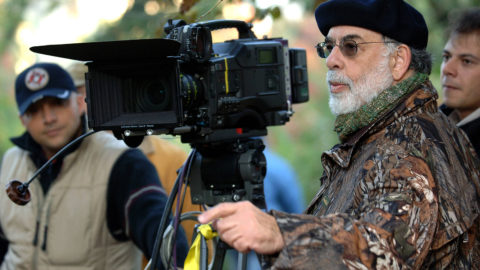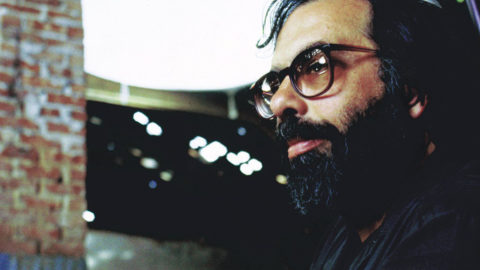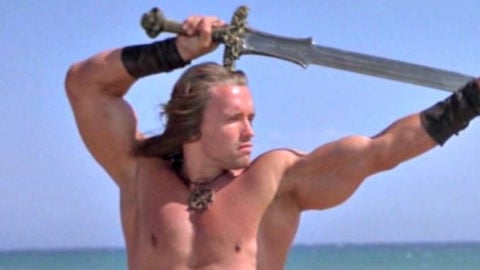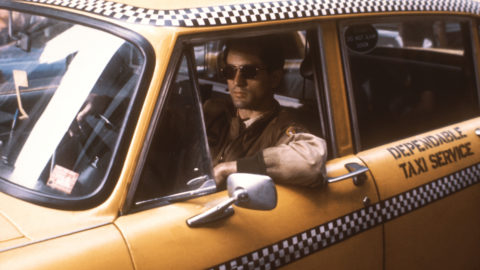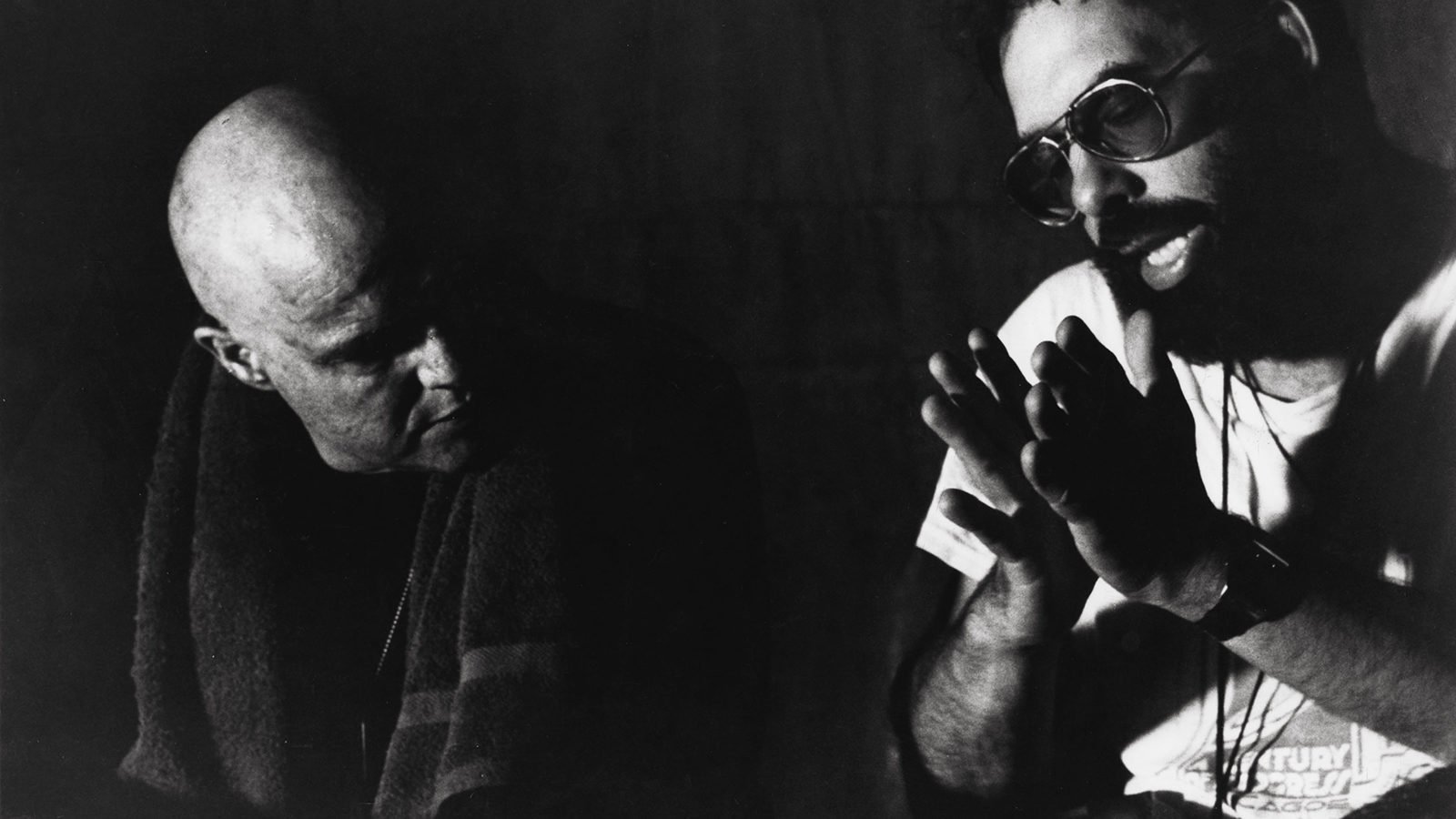
Apocalypse Now: Heart Transplant
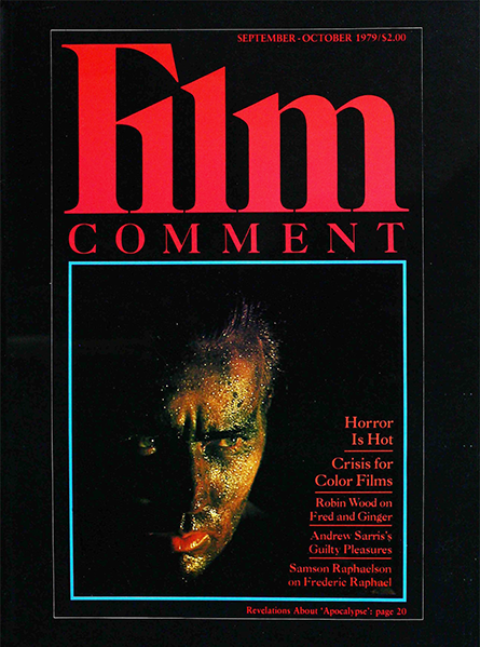
“He was very little more than a voice.” —Joseph Conrad, Heart of Darkness
Little could Joseph Conrad have guessed, when he wrote his novella-length encounter between a man and a myth, that nearly 70 years later Heart of Darkness would engender more myths on its way to the screen than have ever proliferated around a single other film. The Conrad story not only serves as the basis for Francis Coppola’s Apocalypse Now, it could also stand as a parable for the production itself, with Coppola playing both Marlowe and Kurtz—man on his way to myth over the impossible terrain of a wild continent.
Too much is known of Coppola’s own voyage into the heart of darkness, his encounters with “the horror,” and the exasperations of finally realizing a work that would transcend the myths. Too little is know about the genesis of the film—its transformation from a script by John Milius to a film by Coppola.
A reading of Milius’s first-draft script—dated December 5, 1969—dispels another myth: that Coppola completely rewrote the Milius work, an assumption promoted by Milius himself in his interview in FILM COMMENT (July-August 1976).
If the film strayed from the first draft, it was not so much away from Milius’s conception as it was towards Milius’s own source, the Conrad novel; and the final result is far from what Milius contemptuously referred to as “an anti-war movie.” But Milius seems to have had his own preoccupation with Heart of Darkness, which had more to do with his identification with and of Kurtz as a “rotting god” and “legend to a primitive culture.” Combining his own professed desire to “lord it over the monkeys” with his apolitical obsession with war as the ultimate expression of “man’s inherent bestiality,” Milius fashioned a script that structured itself in general terms after the Conrad work, but which incorporated many references to his own interests. These were represented most clearly by Kilgore (named Kharnage in the first draft), a surfing major whose own god-like resistance to fear is matched only by his Patton-like lust for napalm’s “smell of victory.” The Kilgore section of the original draft, though appropriately shortened by a few pages, stands otherwise untouched and remains the most recognizably Milius element in the final film.
In fact, it’s surprising, after all the talk of rift, how much Milius’s original script shows up in the final cut. Two major scenes that don’t—an overnight stop at a French rubber plantation and an encounter with stranded Playboy bunnies—were filmed by Coppola and only excised later at the editing table.
Although Coppola has adhered to Milius’s structure and much of his dialogue, several revisions are significant:
- Milius begins the film at the Kurtz compound, allowing us a fleeting glimpse of the god-monster before Willard is sent to “terminate his command.” A colleague felt this was a wiser beginning to a film whose focal point is reached so late, but in fact, the scene violates the very principals of myth set up in the Conrad narrative. Kurtz’s absence from the screen throughout most of the film is the very thing that nurtures the mythical proportions of his identity, just as it does in the Conrad novel. The myth of Kurtz is a Willard-Marlowe fabrication out of bits of information that formulate a personage so preposterous that, when he more than lives up to those intimations within Marlowe/Willard, we are forced to face a creature as much of Willard’s making as his own. To have shown us Kurtz first, only to abandon him for the next two-thirds of the film, would have proved an unforgivable betrayal of the character and a dilution of the film’s carefully planned unveiling of the man behind, under, or above the myth.
- The Climactic confrontation between Kurtz and Willard has undergone a complete transformation. In Milius’s first draft, Willard is met by Kurtz as he arrives at the compound. He is then taken on a guided tour by Kurtz, who describes the compound and its Montagnard inhabitants like a Westerner fascinated but unchanged by the fatalistic philosophy of the East. The tour is cut short by preparations for a north Vietnamese Army attack on the compound, an attack in which Kurtz is killed. As the attack ends, American helicopters approach—and Willard, suddenly assuming Kurtz’s schizophrenia, shoots directly at them.
(In a subsequent draft, excerpted in the FILM COMMENT/Milius interview, Kurtz forcefully articulates his philosophy to the captured Willard: “Up here is the truth. How much truth can you take, Captain? I’ve made sense of this war—war as you’ve never known it. We revel in our own blood; we fight for glory, for land that’s under our feet, gold that’s in our hands, women that worship the power in our loins. I summon fire from the sky. Do you know what it is to be a white man who can summon fire from the sky? What it means? You can live and die for these things—not silly ideals that are always betrayed. What do you fight for, Captain?” Willard replies, “Because it feels so good.” A bit later, he challenged Kurtz to “Untie me. See if you can face that truth.”)
The final film, which confronts Kurtz’s madness in less concrete displays of military bravado, prefers to suggest “the horror” with the presence of severed bodies and pools of blood, and to sublimate the seduction of Willard by that madness. Where the first draft had plunged directly into battle after a few fatuous speeches by Kurtz, the final film rests its case on the more thought-provoking ramblings of a beast at rest.
This contras also represents a return to Conrad’s depiction of Kurtz as a brilliant, exceptional man. The Milius Kurtz is described as a mediocre commanding officer gone bonkers with his white man’s power over the Montagnards. The final Kurtz is intelligent enough to recognize his madness, and to go the distance by allowing himself to be killed as the only rational solution left. This Kurtz sees the horror in himself, whereas the early Kurtz is just a trigger-happy, circumstantial god, given power by his radio contact with the people who can bring air strikes against whichever side he deems fit to call enemy on any given day.
- The most significant addition to the film came after shooting was completed, in the form of Willard’s voiceover narration, written not by Milius but by Michael Herr, author of Dispatches. With it, a far more meaningful character interaction between Kurtz and Willard is made possible, as in the Conrad novel, long before the two meet face to face. Through it, we are privy to Willard’s changing attitudes toward Kurtz and the consequent changes in himself. As in the Conrad novel, Willard, as narrator, has so prepared us for Kurtz that the latter hardly needs to establish himself except with a few verbal footnotes that detail the source of his derangement.
Coppola plays down the importance of Heart of Darkness as a point of reference in his film, possibly because he has sought to fashion a more complicated amorality tale from the Conrad narrative. Coppola’s Kurtz fashions evil out of truth, from an utter abomination of duplicity, the very game Conrad’s protagonist plays best. Morally or philosophically, Conrad and Coppola are both correct according to their own visions. Col. Kurtz is true to his bestiality. Mr. Kurtz is true to his dual nature as both beast and god.
But to carry Conrad one or several steps further required, paradoxically, a return to the work itself. The following list of direct references to Conrad did not appear in Milius’s first draft:
- The shower of arrows onto the boat just prior to its arrival at the Kurtz compound directly corresponds to a scene in the book, including the spear death of the helmsman.
- A report written by Mr. Kurtz for the International Society for the Suppression of Savage Customs has scrawled across the last page, “Exterminate all the brutes.” Scrawled across Col. Kurtz’s unidentified typewritten manuscript are the words: “Drop the bombs. Exterminate them all.”
- Willard refers to himself as the “caretaker of Kurtz’s memory.” In the book, Marlowe says: “I was to have the care of his memory.”
- The Dennis Hopper character, a flipped-out photo-journalist and “press agent” for Col. Kurtz, is not only strikingly similar to the Russian sailor in the novel, but also quotes verbatim from the character: “You don’t talk with the man—you listen to him”; “This man has enlarged my mind”; “He made me see things.”
- Marlowe’s discussion with a manager about Mr. Kurtz’s “unsound methods” (a phrase first used in the General’s appraisal of Kurtz in the film) also includes Willard’s very answer to Col. Kurtz, “No method at all.”
- Both Kurtzes now utter the same, now famous last words: “The horror, the horror.”
The film’s “fidelity” to Heart of Darkness, however, does not extend to Marlowe’s return to Europe and visit to Kurtz’s fiancée, although Coppola is said to have considered shooting a visit by Willard to Kurtz’s widow. With Coppola and Milius both unavailable for comment, it is difficult to determine just who put the Conrad back into Apocalypse Now. But it’s clear that the intelligence and stark pessimism of the final film owe much to the darkness suggested by Conrad, the darkness lurking deep within the enlightened man.



